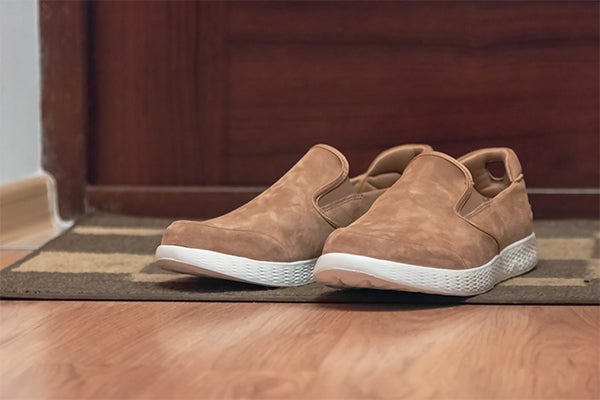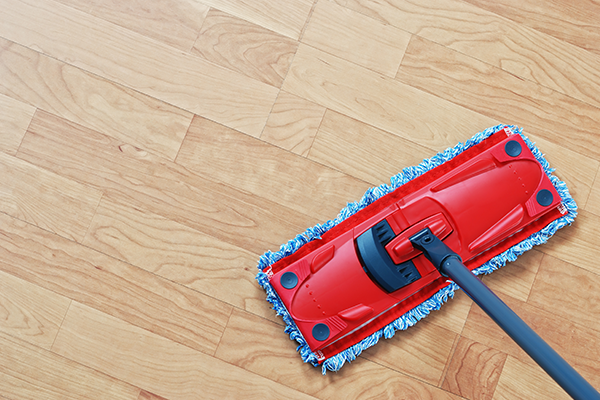
It’s a frozen wasteland outside, but inside something feels off. Every time you walk across your living room floor, you hear small cracks and pops as you step. You notice the once snug seams between each of your hardwood planks now reveal tiny gaps.
These are the tell-tale signs of the often unnoticed battle between your home’s heating system and your hardwood floors.
Of course, winter heating is absolutely necessary for your comfort. Unfortunately, it can wreak havoc on those beautiful wood floors. Their planks shrink, crack, and even warp as a result.
But there’s no need to simply accept seasonal damage as inevitable. Instead, take some time to understand how heat and humidity affect your hardwood – then, you’ll be primed to take steps to protect them year-round.
Why Winter Heating Affects Hardwood Floors
Hardwood floors look and feel tough, but their materials are living and breathing. Wood is hygroscopic, meaning it naturally absorbs and releases moisture from the surrounding air. If the air inside is humid, the planks will swell and if it’s dry, they’ll contract.
Now consider your home’s heating system. When temperatures drop, you crank up your furnace, radiator, or space heater to pump a dry heat into your living space. The result is a drastic reduction of indoor humidity that can lead to significant moisture loss in your hardwood floors.
The more your hardwood dries out, the more it shrinks – sometimes imperceptibly. Other times, you’ll clearly spot gaps forming between planks. The more extreme the moisture loss, the more severe the wood reacts, even cracking.
If your humidity levels are constantly fluctuating, rising and falling every few hours for example, your hardwood takes a beating. You’re putting it through repeating cycles of expansion and contraction. Over time, this stress causes warping, cupping, and even structural damage.
Common Heating Types That Affect Hardwood Floors
Each heating type affects hardwood floors in its own way. Some systems may be more aggressive in the way they pull moisture from the air. Others, not so much. Let’s compare:
- Forced Air Heating: Here’s possibly our worst offender. Forced air heating, which comes from central heat and air units, pushes hot and dry air throughout your home. This rapidly lowers your indoor humidity levels. If your home uses an HVAC system like this, you’ll need constant vigilance when controlling moisture.
- Radiant Floor Heating: These systems are designed to work well with floors, but they’ll still dry out your hardwood if you keep your temps too high. Plus, you’ll pay a lot extra in utility costs. However, since it heats evenly across your floors, you’ll see less damage than with forced air systems.
- Space Heaters: Concentrated heat sources tend to cause more localized drying. This can lead to uneven moisture loss in different parts of the room. If you use space heaters in your home, never point them directly at your flooring, and try to move them around the space regularly.
- Fireplaces and Wood Stoves: These may be the coziest ways to heat your home, but they dramatically reduce humidity in closed spaces. We all love a roaring fireplace in the winter months, but you’ll need to take extra precautions if you want to protect one of your biggest investments from serious damage.
Ideal Humidity for Hardwood Floors
Winter heating impacts hardwood floors more than any other flooring type. That’s because of the huge role the humidity level plays in its health. The best humidity range possible for wood flooring is typically between 35 percent and 55 percent relative humidity, unless otherwise recommended by the manufacturer.
Any time those levels drop below 35 percent, your wood loses moisture and starts shrinking. This causes gaps, and even cracks in extreme cases. If humidity rises above 55 percent, your planks absorb excess moisture, expand, and potentially start warping. They can even cup, buckle, or harbor mold growth if left unchecked.
Are My Floors Suffering from Low Humidity?
This winter, take a look at your hardwood floors. Can you spot any obvious signs they’re struggling with the cold, dry air? Here’s what to look for:
- Gaps Between Planks: Where they were once flush, you’ll now see small separations between the boards that make your floor look and feel uneven.
- Creaking and Cracking Noises: When you walk across your floor, it produces more noise than usual. This is because the boards have contracted.
- Cupping or Crowning: The edges of your wood planks have lifted up, or their centers are bulging upward. This means you have some severely uneven moisture levels.
- Splitting or Cracking: With extreme moisture loss, your hardwood floors can fracture. This typically results in permanent damage and the need to replace some or all your boards.
How to Prevent Hardwood Floor Damage During Winter
Maintain Proper Humidity Indoors - Choose between a whole-home humidifier (installed in many modern HVAC systems) or portable room humidifiers for targeted control. Use a hygrometer to monitor indoor humidity levels and try to keep them within the 35-55 percent range. You should also keep interior doors open to help promote even humidity distribution.
Control Heat Exposure - Aim for stable temperatures in every room of your home and avoid sudden fluctuations. Make sure none of your vents or space heaters are blowing directly onto your floors. Take advantage of ceiling fans on low settings to circulate warm air more evenly throughout your home.
Use Protective Coverings - One of the best ways to minimize direct heat exposure is to cover your hardwood floors in rugs and mats, particularly in high-traffic areas. You should already be using felt pads under furniture pieces to reduce pressure and prevent scratches year-round. Additionally, you could consider installing thermal curtains to reduce excess heat caused by direct sunlight.
Clean Your Wood Properly - If your floors need cleaning, never mop excessively. The water can soak into the wood and cause swelling or evaporate quickly into the warm air and exacerbate dryness. Always use a microfiber mop and wood-safe, manufacturer recommended cleaners that help you maintain appropriate moisture levels while protecting your finish. You can also invest in manufacturer recommended wood conditioners periodically to replenish any moisture lost due to winter dryness.
Preserving Your Hardwood Floors This Winter
If you made the investment in hardwood floors, you already know it’s worth protecting. And now that you’ve explored the impact of winter heating on hardwood floors, you’re set to help keep your floors in top condition during the harshest months of the year.
Want more tips on protecting your flooring year-round? No matter the specific type of flooring in your home, the Empire Today® blog has a number of fascinating articles devoted to each flooring type’s specific challenges.
And if you’d like to learn more about hardwood floors reach out to the Empire® team today. We’ll help you schedule a FREE in-home estimate so you can find out all your options for new flooring!


